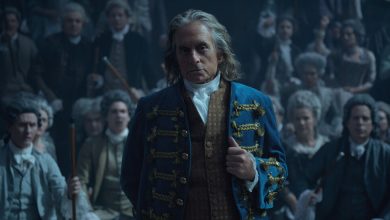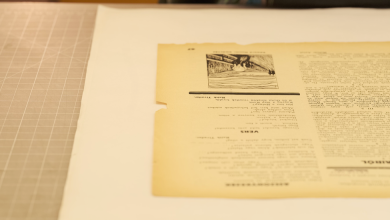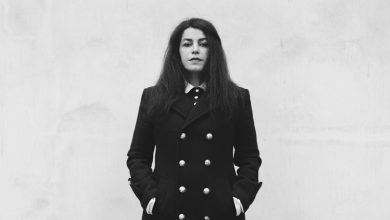Ask a Cannes Cameraman: How Do They Shoot Those Standing Ovations?

CANNES, France — Imagine a cameraman pointing his camera directly at you.
Now imagine it moving closer to your face. No, even closer than that. So close you could almost forget that this moment is shared not just between you and the cameraman, but 2,300 other people who surround you, applaud you and are hanging on your every gesture.
That’s what it feels like when you’re caught in one of the Cannes Film Festival’s infamously elongated standing ovations, in which each twitch of your face — whether from pride, embarrassment or boredom — is captured by the cameraman and broadcast to the Grand Théâtre Lumière’s movie screen, where your supersized reactions play instead of the closing credits.
Even for celebrities, the scrutiny of the Cannes cameraman can be a lot to withstand. This week, Tilda Swinton and Idris Elba teared up in front of the camera after the premiere of “Three Thousand Years of Longing”; last year, long into a sustained ovation for “Annette,” the cameraman panned to a cast member, a bored Adam Driver, as he lit a cigarette. In 2019, as the applause for “Parasite” refused to die down after several minutes, director Bong Joon Ho was even caught on camera leaning over to his lead actor and complaining, “I’m hungry.”
The mechanics of the Cannes standing ovation have long fascinated civilians, but as more clips from those moments go viral on social media, it’s the sustained close-ups that have begun to spur the most debate. “The Cannes standing ovation camera is simply too much to watch,” said one Twitter user, evidently suffering from secondhand embarrassment. “I would honestly just melt if it was on me.”
According to Jean-Baptiste Cortet, it isn’t easy to be the one wielding the camera, either. “I can see how uncomfortable they are, and I feel it,” Cortet said. “I would not want to be in their spot in this moment!”
Cortet, an excitable, apple-cheeked Parisian who met me on a Cannes terrace wearing a Jeff Koons T-shirt and cuffed bluejeans, has spent three decades working for Cannes and began filming the festival’s standing ovations seven years ago. And yes, he knows what people think. “I saw on the internet that people were making fun of it!” he said, ready to clear the air: He isn’t nearly as close to those celebrities as it looks.
By way of demonstrating, Cortet positioned me against the terrace railing and backed a few paces away while brandishing an imaginary camera. “I make sure that I’m as far away as I can, and I zoom in to do the close-up,” he told me, speaking through a translator. He said he would never dare put his camera lens just inches from someone’s face: “Comedians hate that. Especially actresses!”
In many ways, Cortet is the standing ovation’s secret weapon. The audience does not simply clap into a vacuum for several minutes: They are guided and goaded by Cortet, who continually searches for new things to shoot and broadcasts those close-ups onto the big screen behind him.
“The cameraman has the responsibility to carry the emotion of the room,” Cortet said. And those emotions can run very high at Cannes, especially when the film ends and the lights first go up. “This is the time when I’m able to catch an embrace, a discussion between two people — I can navigate through these different moments,” Cortet said. “I like it more when it’s messy.”
A few minutes into those candid moments, Cortet locks into a routine: He will go down the row of actors, filming each one for a surprisingly sustained amount of time, a phase he calls “the eye line.” This is the bit that often extends the standing ovation to record-breaking levels, especially if there’s a large ensemble cast and a famous director present. Then, once everyone has had a solo moment in front of Cortet’s camera, they can pair off in new combinations, a phase that pads the ovation stopwatch even more.
And just over Cortet’s shoulder at most of the premieres is the festival director, Thierry Frémaux, who pushes the cameraman even closer to the stars while exclaiming, “Close-up! Close-up!” Shooting the eye line is “a mix of me feeling the emotion and knowing how to film it, and Thierry knowing who to aim at,” Cortet said, adding with a laugh, “I prefer when I’m alone.”
Some Cannes regulars, like Spike Lee and David Lynch, are now familiar with Cortet and wink or nod when he goes in for the shot. “These directors, who are usually on the other side of the camera, they recognize the difficulty,” he said. “It’s a pleasure for me to see they have empathy for the situation.”
But not every director can stand it. During the ovation for “The French Dispatch,” Cantet moved into the aisle to block Wes Anderson when he noticed the auteur eyeing the exits.
“I have to refrain the directors from leaving!” he said. “They want to trespass past me.”
Cortet doesn’t usually enter the theater until 10 minutes from the ending, so it’s sometimes difficult for him to pick up on how well the film has gone over until the crowd leaps from their seats. “I don’t feel the same emotions as the people in the room,” he said. “I don’t understand the why’s of this raw moment.”
Still, he’s a quick learner. At the premiere of “Armageddon Time,” when the director James Gray burst into tears, Cortet got a little misty, too.
“It happens many times: I feel such a strength of emotion carry to me that tears fall from my eyes,” he said. “And then I can’t see anything because it’s too blurry!



